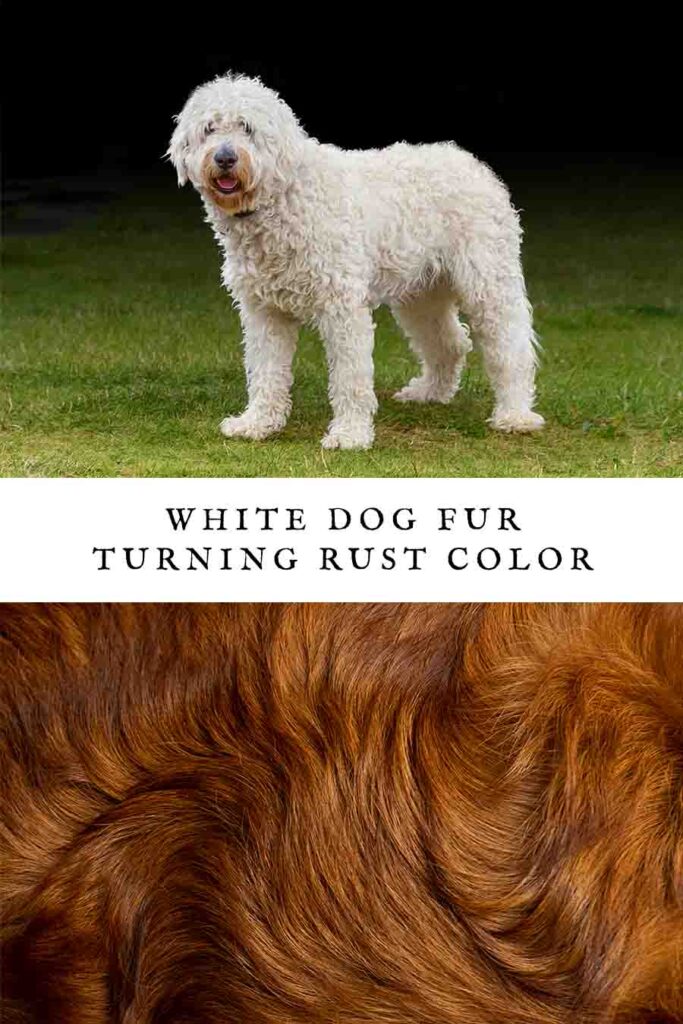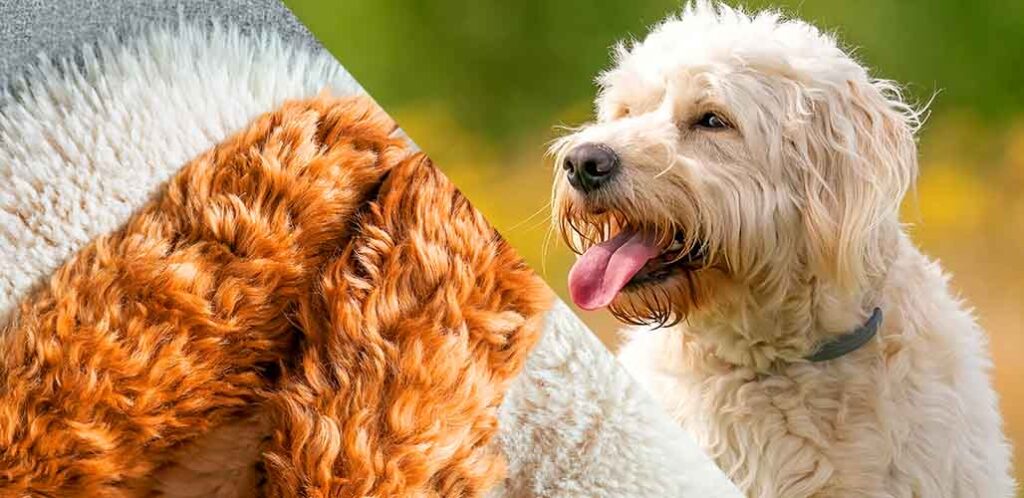Are you having problems with white dog fur turning rust color? Of course our pets are beautiful when they’re fresh out of the grooming salon, and 6 weeks later when they’re starting to look a bit scruffy around the edges. But the appearance of red stains on white fur can be distracting and disconcerting. Rust stains are caused by iron-containing compounds in dogs’ tears and saliva. They’re usually harmless, but if new stains start to appear, or existing stains start to get bigger, it can be a sign of an underlying problem that needs addressing. Here’s everything you need to know about rust stains, and how to restore your dog’s fur back to pristine white again.
Contents
- What’s responsible for white dog fur turning rust color?
- Things that increase fur staining
- How to remove rust color from white dog fur
What’s responsible for white dog fur turning rust color?
Rust colored stains on white dog fur are caused by iron porphyrins. Iron porphyrins are vital chemical compounds for making red blood cells. Dogs ingest a high quantity of iron porphyrins in their diet, because they eat a lot of meat. The porphyrins are then expelled from their body via their digestive system, their liver, and also in their tears and saliva. When dogs’ tears and saliva get on to the fur around their eyes and mouth and dry there, the porphyrins stain the fur rust colored. Your dog’s fur could also get stained anywhere they frequently lick, such as their paws. Porphyrins stain all colors of dog fur, but the discoloration shows up more obviously on white fur and other pale coats. Porphyrin stains are also made darker by exposure to sunlight, .
Things that increase fur staining
Since the porphyrins that cause rust stains are borne in their tears and saliva, red marks are most common on dogs’ faces. Especially at the inner corners of their eyes, around their mouth, and under their chin. There are a number of factors which can make staining worse. Or cause new areas to appear elsewhere on their body.
- Teething
- Diet
- Face shape
- Type of coat
- Entropion
- Fur licking
- Bacteria

Teething
Teething is a notoriously drooly time for puppies. The excess slobber is triggered by pain or discomfort in their jaw and gums, as their permanent teeth erupt and push their baby teeth out. During this time the increase in saliva can also cause rust stains around their mouth to get darker, or spread further down their chin.
Diet
Some dog owners report that changes in their dogs’ diet seemed to coincide with changes in how rust-stained the fur on the face looked. Specifically, offering distilled water instead of tap water, and switching from red-meat based foods to white meat or fish based meals have been said to reduce the appearance of rust stains. As far as I’m aware, this connection hasn’t been backed up by research yet, but it’s an interesting idea, and a relatively easy change to make.
Face shape
Dogs with flat faces have abnormally shaped tear ducts and shallow eye sockets. Combined, these mean that their tears drain away less freely through their tears ducts, and are more likely to end up spilling forward down their face. What’s more, dogs with flat faces are more likely to suffer injuries to the front of their eye and get corneal ulcers, which cause pain and increase tear production. So, white dogs with flat faces are more prone to developing tear stains.
Type of coat
The type of coat a dog has can affect how quickly it is stained by porphyrins. Coats in dull condition are likely to be more porous than coats in a healthy, shiny condition. Meaning porphyrins will stain them more easily. On the other hand, some dog breeds also have naturally oilier coats than others, which will be more resistant to staining. And finally, dogs with hair that’s long enough to blow into their eyes on walks might find it makes their eyes water, resulting in more pronounced tear stains.
Entropion
Entropion is a condition where the lower eyelid rolls inwards, causing the lashes to scratch the surface of the eyeball. The irritation causes the eyes to water, and increases tear staining. Entropion is often inherited, meaning some breeds are particularly affected by it. Some dogs that can have white fur on their face and also have a high frequency of entropion are:
- Bulldogs
- Clumber Spaniels
- Shar Pei
- St Bernards
Fur licking
When rust stains appear on dogs’ fur around their eyes and mouth, it’s usually a result of excess tears and saliva soaking into these areas. But sometimes red stains can appear elsewhere on their coat too. This is a result of your dog licking those areas frequently, and their saliva drying there. A common location is their front paws, as lots of dogs self-soothe by licking these when they’re settling down for a sleep. But the sudden appearance of new patches of rusty fur could suggest that your dog is licking that area more frequently in response to pain from:
- An allergic reaction to something.
- Irritation from fleas or ticks.
- Arthritis in the joint under the skin.
- A cut or wound.
- A foreign object like a grass seed (caught between their toes for example).
- An interdigital cyst.
Excessive licking can also be triggered by stress, boredom, or anxiety. For example if:
- You’ve moved house.
- Moved in with a partner or had a baby.
- Or changes in your working pattern mean you’ve had to start leaving them at home for longer during the day.
Bacteria
It’s probable that when it comes to white dog fur turning rust color, bacteria are partly responsible for making the problem worse. Exactly how they’re doing it is not properly understood. But it’s a widely observed phenomenon that when dogs are receiving antibiotics, tear stains in their coat tend to fade. In fact, one of the leading tear stain removers on the market used to contain an antibiotic called tylosin as its active ingredient. But it has since been banned to reduce the risk of tylosin-resistant bacterial strains emerging.
How to remove rust color from white dog fur
White dog fur turning rust color is usually an aesthetic problem rather than a medical one. But, new areas of rust color in your dog’s fur, or sudden expansion of an existing area ought to be checked by a veterinarian. This to rule out underlying sources of pain.
Ordinary rust staining around the eyes and mouth can be controlled by keeping the fur on their face trimmed, clean, and dry. There are lots of products you can buy which promise to help fade tear stains. But simply wiping your dog’s face a couple of times a day with a damp cloth will make a difference. The key is removing porphyrins before they can penetrate the hairs and cause deep staining. Making changes to their diet to reduce how much iron they consume might also have some effect.
White dog fur turning rust color – summary
All shades of dog fur can be stained rust color by iron-containing porphyrins in their tears and saliva. But, the staining is most obvious on white coats. All white dogs have a level of staining which is normal for them, determined by how much their eyes water, how much they drool, and whether they have a habit of licking their coat in particular places. There’s no need to remove it, but you can wipe their face twice a day if it bothers you. A sudden increase in rust colored fur could indicate pain or distress, so report it to your vet.
Do you embrace your white dog’s rusty areas, or try to fight them? Have you ever spotted a problem with your dog’s health because a new rust stained area appeared in their coat? Let us know in the comments box down below!

